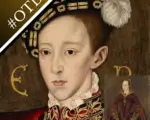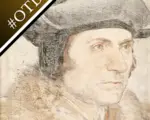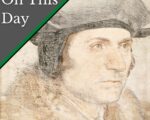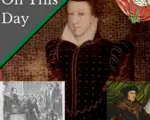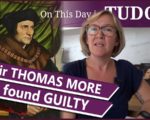On this day in history, 13th April 1534, Sir Thomas More, Henry VIII’s former Lord Chancellor and good friend, was summoned to Lambeth to swear his allegiance to the Act of Succession. He refused to swear the oath and “thereupon was he delivered to the abbot of Westminster to be kept as a prisoner.”
His son-in-law, William Roper, recorded what happened that day in his book The Life of Sir Thomas More:
“So fell it out, within a month, or thereabout, after the making of the Statute for the Oath of the Supremacy and Matrimony, that all the priests of London and Westminster, and no temporal men but he, were sent for to appear at Lambeth before the Bishop of Canterbury, the Lord Chancellor, and Secretary Cromwell, commissioners appointed there to tender the oath unto them. Then Sir Thomas More, as his accustomed manner was always ere he entered into any matter of importance, (as when he was first chosen of the king’s privy council, when he was sent ambassador, appointed Speaker of the parliament, made Lord Chancellor, or when he took any like weighty matter upon him) to go to church and be confessed, to hear mass, and be houseled; so did he likewise in the morning early the selfsame day that he was summoned to appear before the lords at Lambeth.
[Read More...]



